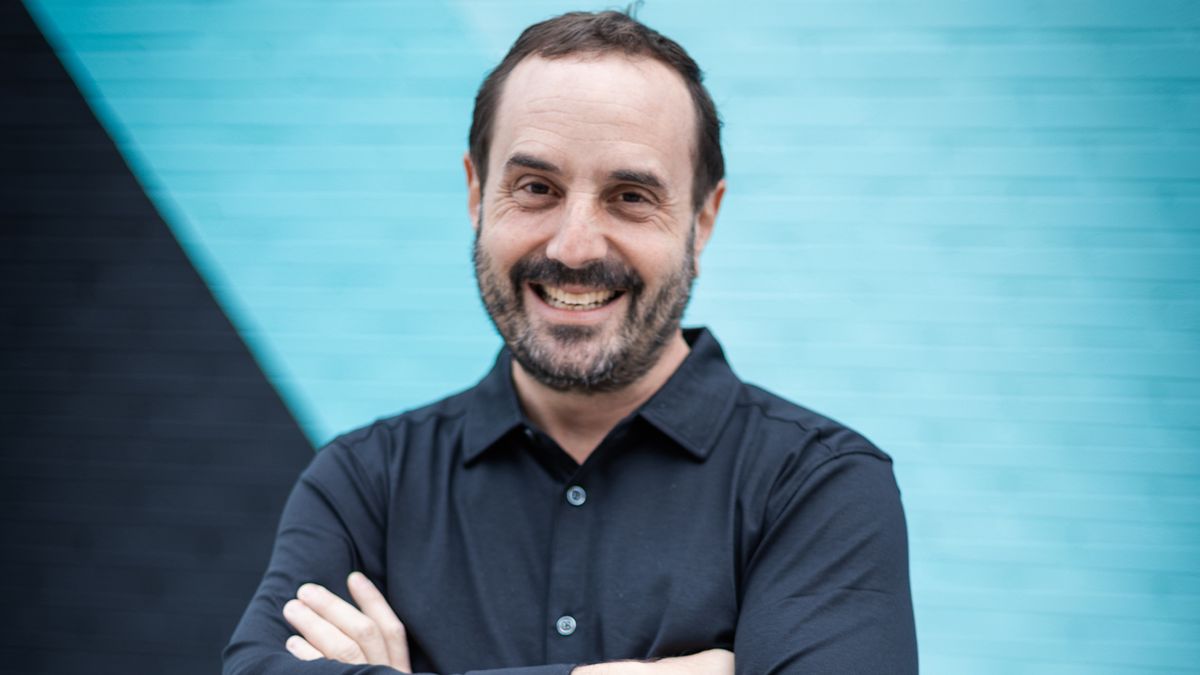Adam Davis is the CEO of TAIT – a global leader in the world of live entertainment. Hailing from Lilitiz, Pennsylvania where live music touring made its humble beginnings, Adam discussed TAIT’s evolution from rock show specialist to the global live experience platform that it is today. Boasting an impressive repertoire of clients, from Taylor Swift to Beyonce, TAIT’s influence on the stage design world has already been insurmountable, and it’s only expanding.
I sat down with Adam to discuss how the live entertainment industry has changed post-pandemic, what the rise of AI means for the future of design and what’s next for the imagination playground that is TAIT. (For more creative inspiration check out the best design portfolios that showcase the diversity of the design industry).
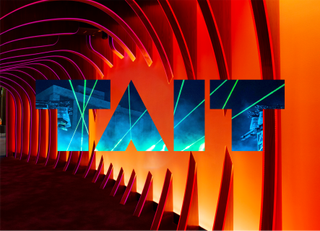
Tell me about the origins of TAIT. How has the company evolved?
This is our 46th year in business. The company was founded on the roots of rock and roll – that’s our origin. There was a fair amount of pioneering in the early years that had to happen because the venues weren’t built to do the shows, and it was always about exceeding expectations and creating a spectacle. It’s a bit of a punk mindset of hell or high water. We’re going to make it happen – there’s nothing that’s going to get in our way. If 20,000 fans show up tomorrow night, there will be a show and we’ll have a plan A, B and C.
At the root of it is storytelling and creating the energy in the room – making moments that really matter. It’s about establishing character conflict and resolution through the design and storytelling process– but that’s just what the audience sees.
if you go back in time, there are two things that simultaneously happened, One, the Internet came out – touring became the absolute epicentre for an artists’ revenue and it shifted very quickly from record sales to touring. At the same time, the world started to flatten out because of the internet.
People all over the world saw our equipment via access to us through the internet and they started calling. It was about 20 years ago that this massive expansion happened and we followed this bubble to serve audiences around the world. At the same time, it came out of a place of fear. We thought ‘Oh my gosh, will touring still be a thing?’
The company comes from a spirit of ‘let’s put our heads down and do great work’
Adam Davis, CEO of TAIT
If you looked at our clients back then – Rolling Stones, Billy Joel, Bruce Springsteen, Tina Turner – it was hard to see whether this was going to continue. These were the baby boomer bands and we hadn’t seen this new generation take hold. So we set out to diversify across other live experience markets to make sure that the business was sustainable.
We’ve built a skill set to serve cruise ships, theme parks, opera houses – each one of those brings a new skill set or a new problem-solving mindset to the table. We set out to diversify for survival.
The free market that we were born into is a very short horizon. Major spectacles like the Beyonce tour or a U2 show, we’re not taking years to do it – sometimes we’re pulling that off in three months. The resources that you need to be able to do that can be challenging when you’re running a business, but as we diversified into other markets we could balance out the resources allowing us to get better work-life balance for the team and better planning. This multifaceted expansion from our core mindset of ‘take no prisoners, we’re going to put a show on tomorrow’ naturally developed into more capacities and skill sets.
We think of ourselves as an army of joy makers behind the scenes. Hopefully, you’d be hard-pressed to find a global citizen who hasn’t seen some of our work, but hopefully, they’ve never heard of us.
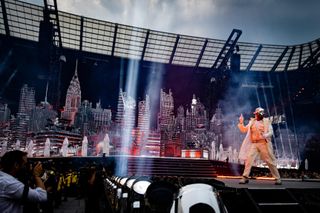
How did the pandemic effect the industry?
The pandemic was a character building experience for everyone in live event – it didn’t matter whether it was a theme park, cruise ship or a rock and roll show, there was a ticketed audience and that all shut off overnight. We live in a little live bubble so we used it as an opportunity to double down on ourselves. It was the first time in forty years we’d had a moment to shore up our foundation and get the house in order for the growth that the company had experienced.
It was a non-negotiable that live audiences were going to come back together. When the early stages of the pandemic hit in April of 2020 we put out a graph for the company that projected this is going to be a three-year disruption – this is going to be a year of nothing happening. We’re going to need to mobilize again from this hibernation for a year, and then it’s going to be a year of practising the mastery to get back to it.
We think of ourselves as an army of joy makers behind the scenes
Adam Davis, CEO of TAIT
We took a long-term view that proved to be correct, but underlying it was this firm belief that audiences are going to come back together. It’s just such a fundamental human instinct – something happens from a neurological heart place. When you bring people together we synchronize and there’s something in our soul that’s rejuvenated. We had a fundamental belief that it was going to turn back on.
What’s fascinating to me is the scale of the production hasn’t actually changed – what’s changed is the public perception. When the world turned off, it’s like gravity disappeared. It’s remarkable to me how in 2024, on the front page of the newspapers are these live projects that wouldn’t have been on the front page of the newspaper before the pandemic. We tend to work on the largest, most complicated stuff in the world, and that wasn’t making the news. It’s interesting now that it’s making headlines – whether it’s Beyonce, Taylor Swift, The Sphere or the theme park expansions Disney’s just announced. This is just [TAIT’s] language, this is the world that we live in.
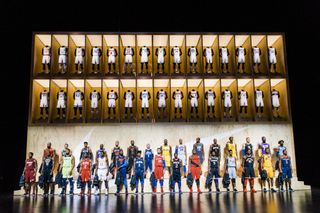
What’s the process of starting a new design project?
The way I view our company is that we’ve built a sandbox for artists to play in and do great work. When we’re ideating and working on a theme park, it’s a very different process than a touring rock show. What they have in common is it’s incredibly collaborative.
We’re experts at creating a sandbox where free thinking can happen and understanding it’s not a linear process. We call it the design spiral. It’s about understanding what all the criteria are and circling around that – let’s spend 1% of our time on every one of the criteria, and then 2% and then 3% and work out a solution – it’s a very agile process.
What makes great design is not creating for nine out of the ten criteria, but solving the full algorithm
Adam Davis, CEO at TAIT
The real show starts when it’s getting unloaded from the truck. It requires thinking differently because you have to decide what the criteria are that you’re designing to. What makes great design is not creating for nine out of the ten criteria, but solving the full algorithm. That forces our team to think outside the box and come up with lateral solutions that might not be obvious. I call it the loopholes in the world, it’s finding these solutions that we didn’t see before.
We think about flexibility at every turn and that agility allows room for experimentation – that’s where the magic happens. When we create an environment where we can ask ourselves ‘What are the silliest things we would ever do? What are the things we would never even imagine? How do we create the magic in the room?’ it all comes back to designing ‘energy’.
We think excellence happens when you put a physicist in the room with an engineer but it’s actually about creating that spark of an idea. We might have a sculptor sitting there with a machinist and we create an environment where anyone’s ideas could be the right idea. It has nothing to do with whether ‘I went to Oxford’ it’s about building a space where anybody can come together. Part of that process – that spiralling – is creating an environment where we can prototype and experiment.
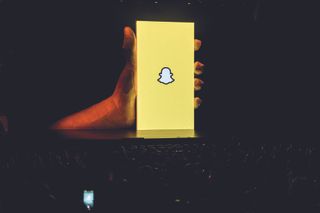
Is it tricky to create a a symbiosis between the different teams within a project?
I think what we as a company do well is speak three languages. There’s an economic reality, as sure as physics or gravity, to anything we’re involved with. We understand that reality and we’re only successful when our clients are financially viable. Understanding and grounding ourselves in what the business plan is, and being a partner to our clients to help advise that because we’re working in such a vast range of projects across business plans – that’s where we’re able to add value.
The second language is storytelling. We think of ourselves as technology-enabled storytellers. We speak art. We speak with an artistic sensibility. It’s part of our ethos.
At the edge of real mastery is this childlike joy and discovery within everything you do
Adam Davis, CEO of TAIT
The third is delivery. It’s the management process to be able to deliver a schedule, scope and budget in a precise and accurate way. The modern concert tour is often misunderstood in terms of complexity. To deliver a project like Taylor Swift’s Eras tour we’re tracking millions of parts and we can tell you the traceability of any piece of material, who touched it and where it came from. We need to know that everything that we ideated is going to be delivered and executed and there’s a finite element analysis to every part. The level of engineering that goes into what we do, it’s down to the wheel on the cart.
On one hand, we’re working with some of the most sophisticated live designers in the world, and on the other hand, we’re working with people who are drawing on a napkin but we’re able to speak across that language. We speak art.
When I talk about creating this sandbox, it’s about being able to simultaneously think through the storytelling and how to exceed artistic expectations with real-world expertise. The projects we’re working on range from simple and not that expensive to some that are hundreds of millions of dollars – the sophistication of circling into that is part of the trick.
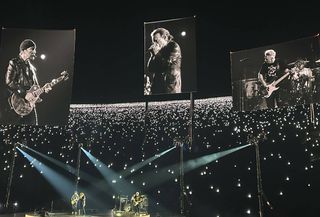
Could you tell me about designing for U2 live at Sphere?
What’s interesting about the sphere is we spent years helping build out the infrastructure in the venue – it’s enabled by our technology. It gives us the expertise when we start talking with our clients because we understand the constraints of the building. Every day, we’re in conversations where we’re pioneering new live experiences so it actually feels natural to us,
At the edge of real mastery is this childlike joy and discovery within everything you do. We’ve done thousands upon thousands of live experiences, and the sphere to us is another place to experiment and reconsider everything we know. It starts with the audience members – we’re here to give them these exceptional moments – so it starts by envisioning it through their eyes.
We can only give them an exceptional experience if the performers feel grounded and confident in who they are – it’s an interesting dynamic. To me, the definition of real ‘live’ is right here right now. The artists are experiencing something because they’re feeding off of the audience, and the audience is experiencing something because they’re feeding off the band. Great design happens by considering the psychology of both sides
When we work with a group of people, we want to work with you for life
Adam Davis, CEO at Tate
The reality is, if you look at the exceptional creative team that puts on a U2 show, what’s special about it is that we’ve been working together for years and years, there’s a trust there and a vulnerability that comes with that.
I think one of the things I’ve become personally aware of since the pandemic is how lucky we are to be in such rarefied air every day. They’ve been practising this mastery around the live experience. We’re so lucky that we get to interact with those people every day and it’s even rarer to get to work with the same teams over and over again and build up a short hand language of trust. To me, the U2 show and the Sphere in general are great examples of that
The LED video screen was pioneered by U2 in 1997 and the team that did that is the same team that built the LED for the sphere – it’s come full circle. If you play it forward, that technology has become so ubiquitous. Here you have U2 opening up this groundbreaking building that the visual creative process to the extreme. It just goes back to how lucky are we. that we’re working with the same teams over and over again. At TAIT, when we work with a group of people, we want to work with you for life.
It’s an artistic process. In any artistic process, there’s joy, there’s strain, there’s tension – it’s like giving birth. Sometimes you don’t know what you’re going to get. By going through these processes together time and time again you gain a real trust.
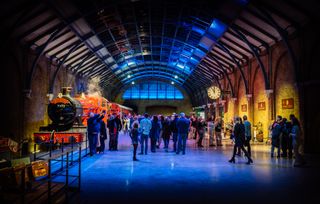
How do you feel about the rise in AI technology?
It’s another tool to empower creatives to do their job. We’re not sitting here going ‘Oh gosh, we’re going to be out of a job,’ It’s quite the opposite. It’s enhancing what we’re doing. It’s inspiring us to do more.
We’re using it to be able to ideate quicker and enhance our ideation. I started drawing by hand and then CAD into 3D CAD and parametric design. it’s just another tool to enable us to continue to push the boundaries and continue to pioneer.
What’s next for TAIT?
If I look at what the company has done in my own career, It started in what was a proscenium environment – a theatre. We’re pushing storytelling into the real world and as that happens. more and more I think that storytelling is going to become individualized. It’s what the whole operating machine of TAIT is built to do.
We’re delivering a technology platform that allows individualized storytelling by connecting together the data world and the storytelling world as an operating system. We see a future whereby continuing to build out this sandbox for creatives allows us to imagine storytelling that doesn’t have to be ‘I’m sitting in my seat and we’re all receiving the same story’. It can start before you get into your seat and even when you’re there it can be individualized, especially as virtual reality and augmented reality become intermixed with the live experience.
The live experience world is often where new technology is pioneered because it’s how people get comfortable with it before they take it home. That’s the place we live. Every day it’s about pioneering. Over time it looks like invention, it’s not – it’s just incremental improvement.
